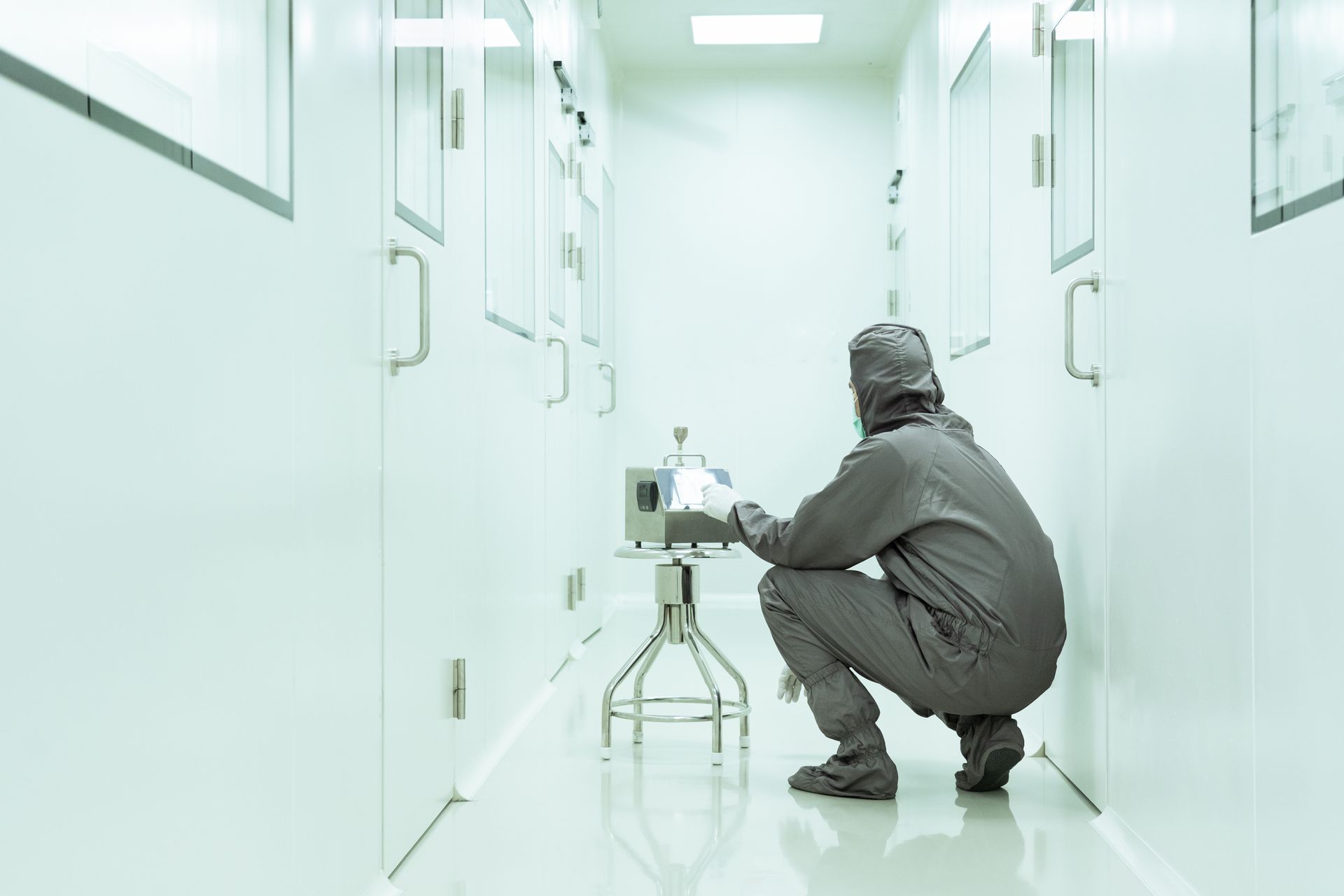ISO 21501-4: A Comprehensive Overview of Its Standards and Applications

Introduction
ISO 21501-4 is a part of the ISO 21501 series, which outlines standards for instruments used in the measurement of particle size distribution. Specifically, ISO 21501-4 is tailored to the calibration and performance evaluation of light-scattering airborne particle counters (LSAPCs). These devices are critical in monitoring air cleanliness in controlled environments, such as cleanrooms, pharmaceutical manufacturing facilities, and semiconductor production.
This article provides a detailed exploration of ISO 21501-4, including its purpose, scope, technical specifications, and implications for industries requiring strict contamination control.
Purpose and Scope of ISO 21501-4
ISO 21501-4 establishes calibration standards for airborne particle counters that use light scattering to detect and measure particles in the air. The standard ensures that these instruments produce reliable, repeatable, and accurate data essential for verifying compliance with cleanliness standards like ISO 14644, which governs cleanroom classifications.
The standard covers the following areas:
- Calibration Requirements: Provides guidance for the calibration process to ensure instruments produce traceable and reproducible results.
- Performance Criteria: Defines acceptable levels of accuracy, resolution, and linearity for particle counters.
- Traceability: Ensures measurement results are linked to international standards through traceable calibration processes.
- Measurement Uncertainty: Establishes methodologies to quantify and minimize uncertainties in measurements.
Key Technical Aspects of ISO 21501-4
ISO 21501-4 contains detailed technical requirements for airborne particle counters. Below are the primary aspects:
1. Principle of Light Scattering
The standard applies to instruments that measure particles using the principle of light scattering. In these devices, a laser beam illuminates airborne particles as they pass through a measurement chamber. The scattered light is detected, and its intensity is used to estimate the size of the particle.
2. Calibration Procedure
ISO 21501-4 specifies how instruments should be calibrated using monodisperse polystyrene latex (PSL) spheres of known sizes. Key calibration steps include:
- Particle Size Calibration: Ensures the counter accurately measures particle sizes within the required range.
- Counting Efficiency: Verifies the instrument’s ability to count particles at various sizes, typically requiring a counting efficiency of 50% for the smallest measurable particles and near 100% for larger ones.
- False Count Rate: Ensures that the instrument does not report spurious particles when no particles are present in the air stream.
- Flow Rate Calibration: Confirms the consistency of the airflow through the device, as accurate particle measurements depend on stable flow.
3. Resolution and Linearity
- Resolution: The standard defines how well an instrument can differentiate between particles of similar sizes. This is critical in applications like cleanroom monitoring, where particles near size thresholds are significant.
- Linearity: Particle counters must maintain consistent performance across their entire size measurement range, from the smallest detectable particles to the largest.
4. Measurement Uncertainty and Traceability
ISO 21501-4 emphasizes minimizing measurement uncertainty by adhering to strict calibration protocols. The use of PSL spheres traceable to recognized standards ensures that the data generated by particle counters is consistent and comparable across different instruments and settings.
5. Detection Range
The standard defines a typical detection range for LSAPCs, often between 0.1 μm and 10 μm. This range aligns with the particle sizes of interest in cleanroom standards, where larger particles may indicate contamination risks.
Applications of ISO 21501-4
Industries requiring highly controlled environments rely on particle counters adhering to ISO 21501-4 for maintaining compliance with cleanliness standards. Key applications include:
1. Cleanroom Monitoring
Cleanrooms are classified based on the concentration of airborne particles of specific sizes. ISO 21501-4-compliant particle counters are essential for:
- Classifying cleanrooms per ISO 14644-1.
- Verifying that contamination control measures are effective.
- Ensuring cleanroom integrity during operations.
2. Pharmaceutical Manufacturing
In pharmaceutical production, particle monitoring ensures adherence to Good Manufacturing Practices (GMP) and regulatory requirements from agencies like the FDA. Particle counters verify air cleanliness in critical areas such as sterile filling zones.
3. Semiconductor Manufacturing
Semiconductor facilities require ultra-clean environments to prevent defects caused by particle contamination. ISO 21501-4-compliant counters are used to maintain air purity levels within stringent tolerances.
4. Hospital and Laboratory Environments
Healthcare facilities and laboratories use particle counters for infection control, ensuring that cleanrooms and laminar flow cabinets meet required cleanliness standards.
Benefits of ISO 21501-4 Compliance
Adhering to ISO 21501-4 offers numerous benefits:
- Enhanced Accuracy: Precise calibration ensures accurate particle size and count measurements.
- Global Consistency: Instruments calibrated to ISO 21501-4 provide results consistent with international standards, facilitating cross-border compliance.
- Regulatory Compliance: Compliance with ISO 21501-4 supports adherence to regulatory requirements in critical industries.
- Improved Quality Control: Reliable particle counting enhances product quality and reduces contamination risks.
Challenges and Considerations
While ISO 21501-4 offers robust guidelines, implementation can be challenging:
- Calibration Complexity: The calibration process requires specialized equipment and expertise, increasing operational complexity.
- Cost: Compliant particle counters and calibration services can be expensive, particularly for small-scale operations.
- Regular Maintenance: Instruments must undergo regular recalibration to maintain compliance, adding to operational costs.
Future Trends and ISO 21501-4
The importance of ISO 21501-4 is likely to grow as industries demand higher levels of contamination control. Emerging trends include:
- Automation in Particle Monitoring: Integration with smart systems for real-time monitoring and automated reporting.
- Expanded Detection Ranges: Development of particle counters capable of measuring smaller particles, down to the sub-0.1 μm range, for advanced applications.
- Sustainability: Design of energy-efficient instruments and eco-friendly calibration processes.
Conclusion
ISO 21501-4 is a cornerstone standard for light-scattering airborne particle counters, ensuring their accuracy, reliability, and traceability. Its implementation is critical in industries that demand rigorous contamination control, such as cleanroom operations, pharmaceuticals, and semiconductor manufacturing.
By adhering to ISO 21501-4, organizations can achieve higher levels of quality assurance and regulatory compliance, laying the foundation for safe and efficient operations in controlled environments.
Read more: All About Cleanrooms - The ultimate Guide






